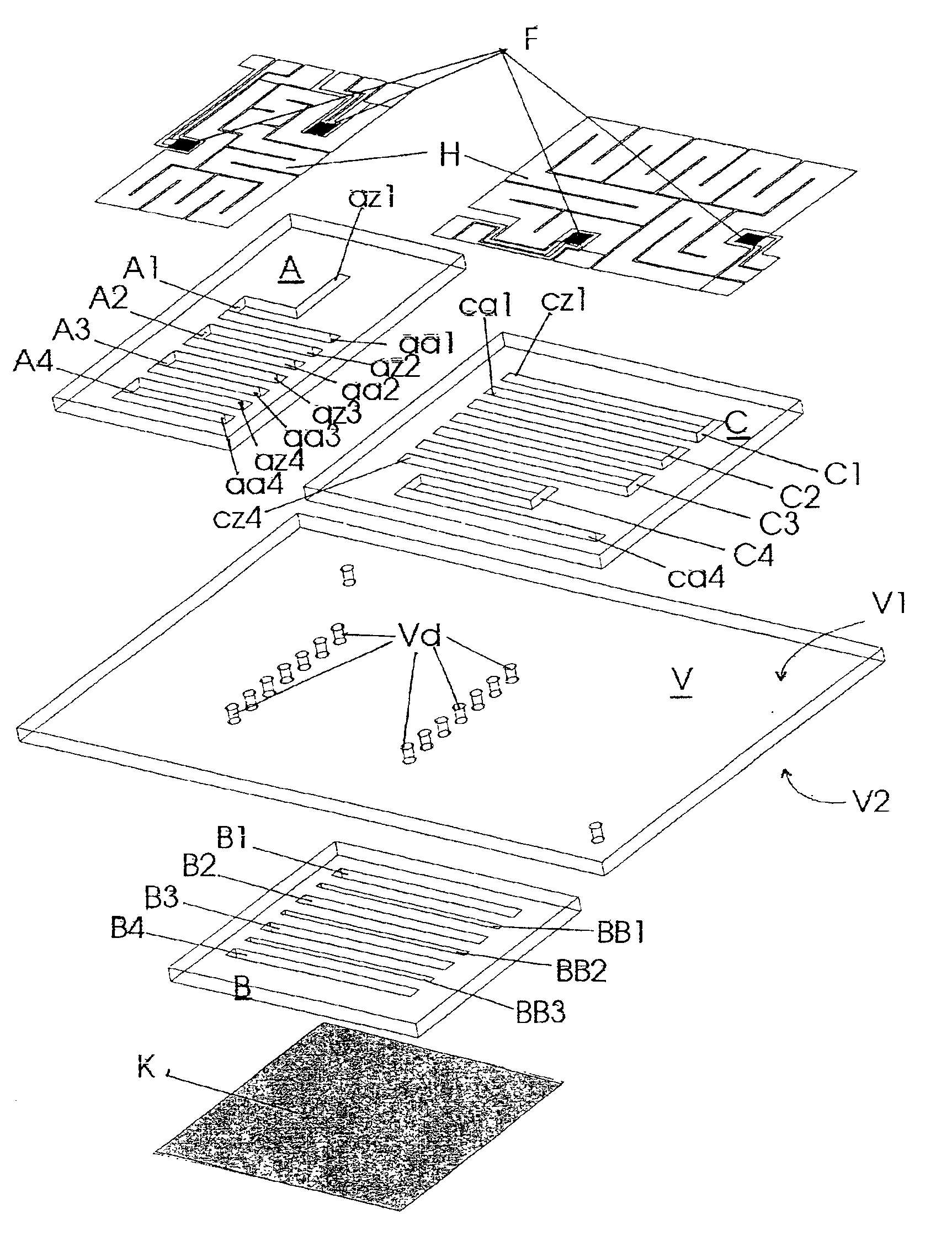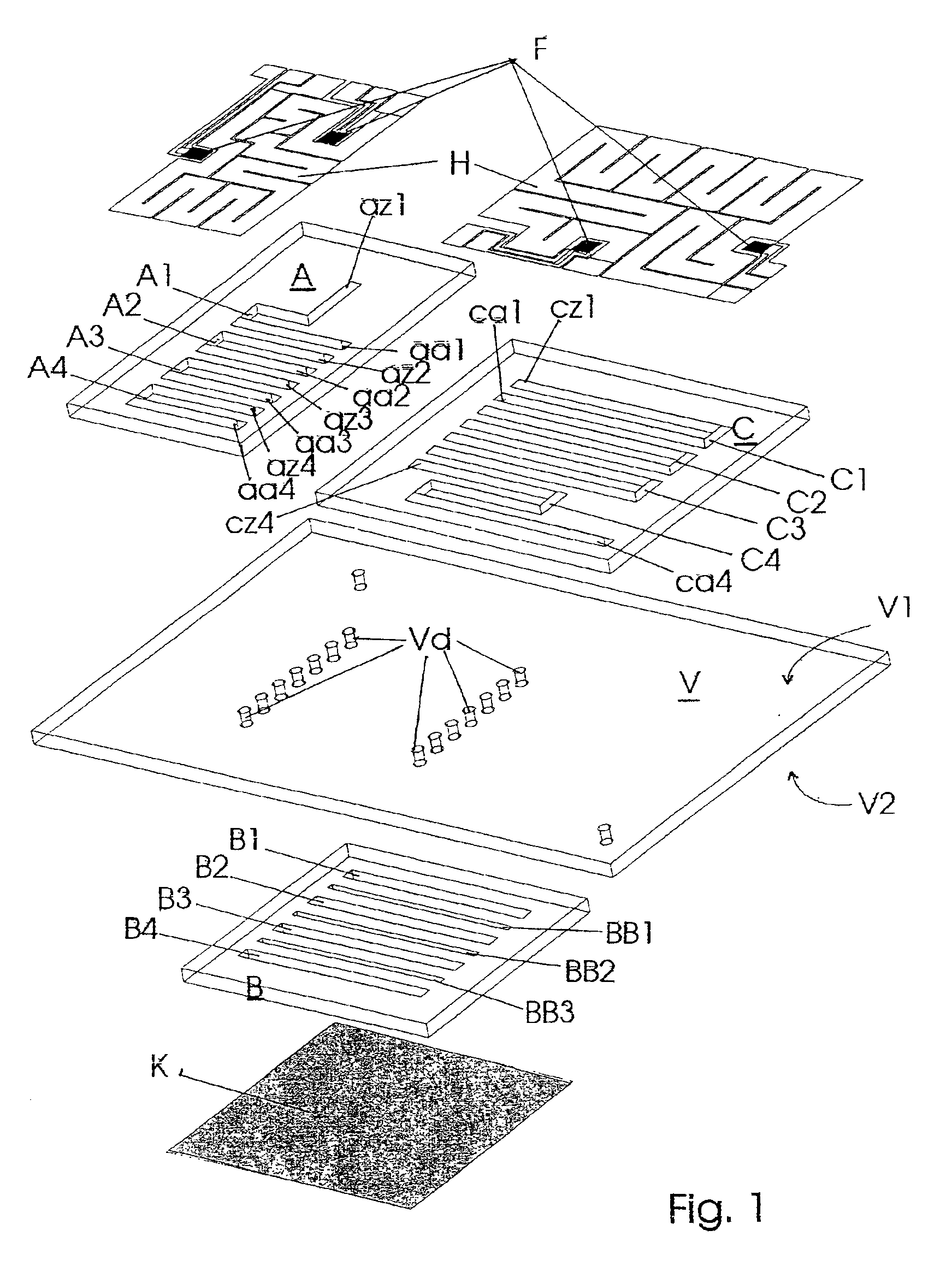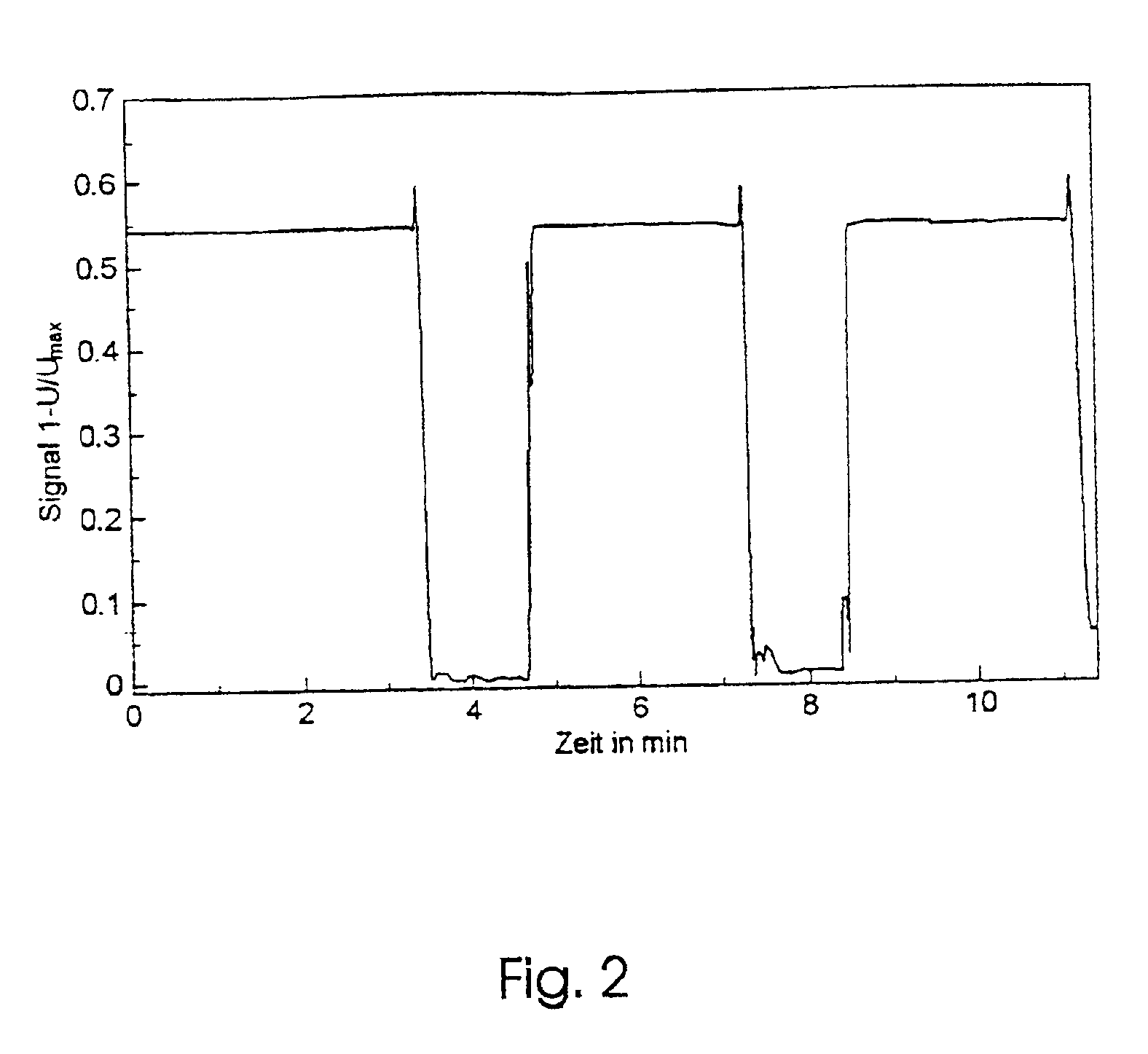Miniaturized temperature-zone flow reactor
a flow reactor and temperature-zone technology, applied in the field of miniaturized temperature-zone flow reactors, can solve the problems of limited temperature change rate, insufficient effectiveness of sample chambers known up to now, and low efficiency of methods
- Summary
- Abstract
- Description
- Claims
- Application Information
AI Technical Summary
Benefits of technology
Problems solved by technology
Method used
Image
Examples
Embodiment Construction
[0018]In FIG. 1 a miniaturized temperature-zone flow reactor is shown in an exploded view. For the sake of simplicity, only one closed flow path is shown in the example, the course of which will be described in the following. To begin with, there is provided a first substrate chip A which, in the example, has the external dimensions (length, width, thickness) of (8×13×0.5) mm and into one side of which channels are inserted that will have a length of 9 mm, a width of 0.536 mm and a depth of 0.380 mm. In the present example, the entire single channel section is to be understood by the here designated length. Said channel section lies, for example, between an inlet opening az2 and an associated outlet opening aa2, so that this channel section holds a volume of 0.9 μl in the present example. Furthermore, a third substrate chip C is provided which, in the example, has the external dimensions (length, width, thickness) of (14×13×0.5) mm and into one side of which channels are inserted th...
PUM
| Property | Measurement | Unit |
|---|---|---|
| size | aaaaa | aaaaa |
| depth | aaaaa | aaaaa |
| width | aaaaa | aaaaa |
Abstract
Description
Claims
Application Information
 Login to View More
Login to View More - R&D
- Intellectual Property
- Life Sciences
- Materials
- Tech Scout
- Unparalleled Data Quality
- Higher Quality Content
- 60% Fewer Hallucinations
Browse by: Latest US Patents, China's latest patents, Technical Efficacy Thesaurus, Application Domain, Technology Topic, Popular Technical Reports.
© 2025 PatSnap. All rights reserved.Legal|Privacy policy|Modern Slavery Act Transparency Statement|Sitemap|About US| Contact US: help@patsnap.com



